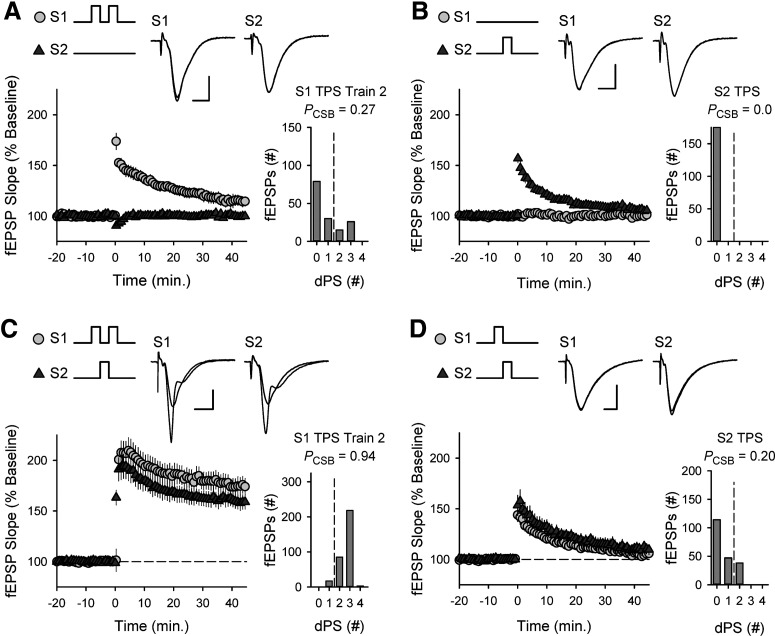Figure 11.
CS burst-dependent LTP exhibits a retroactive, non-Hebbian form of cooperativity. A, Two trains of TPS (both 5 s in duration, ITI = 5 s) were delivered to S1 synapses (at time = 0). At 45 min after TPS stimulation, S1 fEPSPs were 115 ± 5% of baseline, n = 6. B, A single train of TPS (duration = 5s) was delivered (at time = 0) to S2 synapses. At 45 min after TPS, S2 fEPSPs were 103 ± 3% of baseline, n = 7. C, Triplet pattern of TPS (S1 → S2 → S1) where activation of S2 synapses fills the ITI between S1 TPS trains was delivered at time = 0. At 45 min following triplet TPS stimulation, S1 fEPSPs were potentiated to 175 ± 8% of baseline and S2 fEPSPs were potentiated to 159 ± 7% of baseline, n = 13. D, Sequential trains of TPS (S1 → S2, each 5 s long) were delivered to S1 and S2 synapses at time = 0. At 45 min after TPS, S1 and S2 fEPSPs were 105 ± 3% and 111 ± 5% of baseline, respectively (n = 8). A-D, Histograms represent the number of EPSPs eliciting 0-4 dendritic PSs during the indicated trains of TPS from all experiments. The PCSB during the second train of TPS delivered to S1 synapses was significantly enhanced when TPS was delivered to S2 synapses during the interval between S1 TPS trains (Mann–Whitney U = 3.5, p = 0.001). A-D, Traces represent superimposed fEPSPs elicited by S1 and S2 stimulation recorded during baseline and 45 min after TPS.

